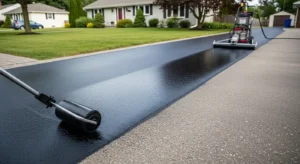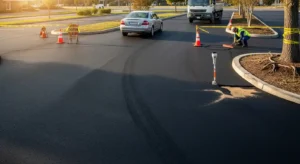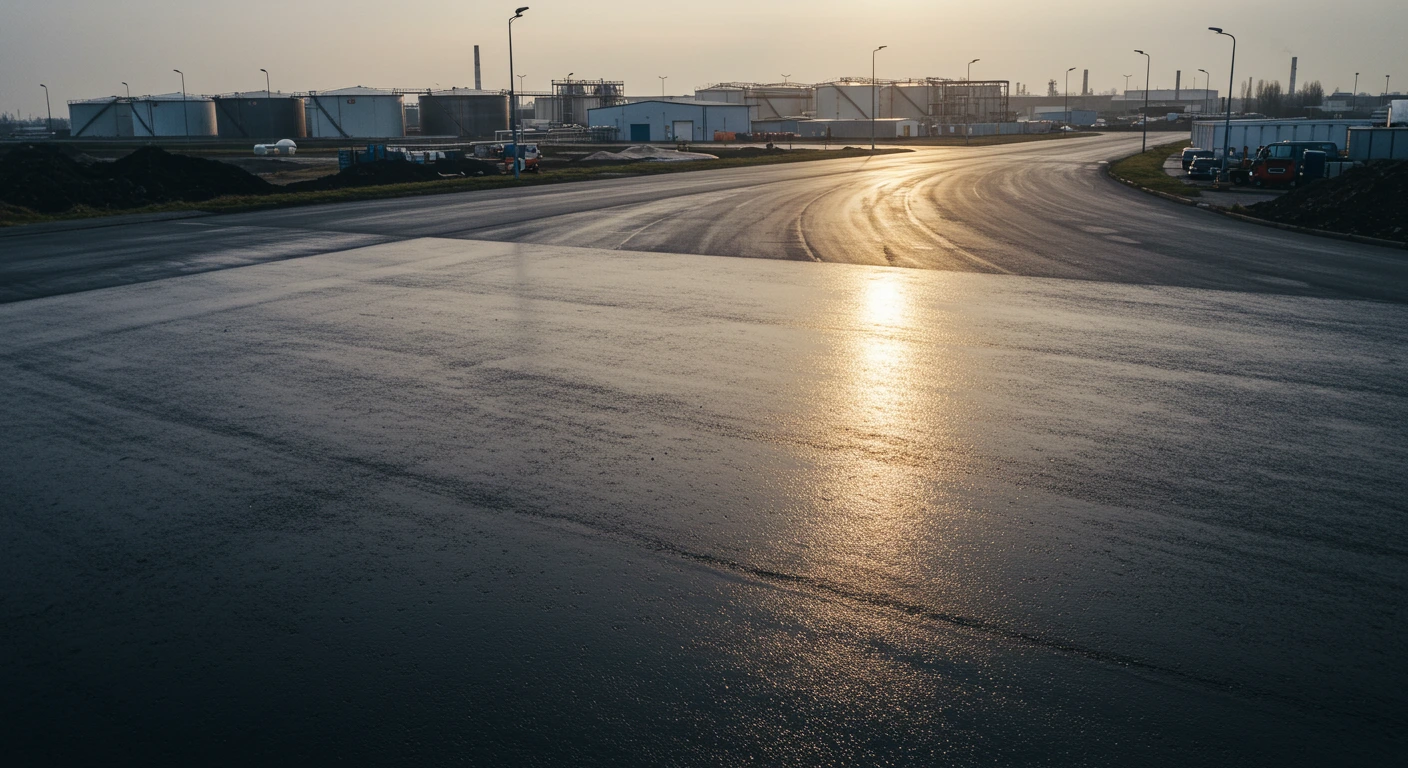Ever wondered why some driveways crack after just a few years while others last decades? The secret often lies in one crucial factor: thickness. Getting the right depth for your pavement can save you thousands in repairs down the road.
Here’s the simple truth: how thick is asphalt paving depends on what you’re building and who’ll be using it. But don’t worry, we’ll break it down in easy terms so you can make smart choices for your project.
Why Thickness Matters More Than You Think
Think of pavement like a sandwich. You wouldn’t put just one thin slice of bread on the bottom and expect it to hold up heavy ingredients, right? Same goes for your driveway or parking area.
When the material is too thin, all the weight from cars and trucks gets squeezed into one small spot. This creates tiny cracks that grow bigger over time. Eventually, you’ll see potholes and serious damage that costs way more to fix than getting it right the first time. The right depth spreads out all that weight evenly, keeping your surface smooth and strong for many years.
Home Driveway Requirements
For most homes, you’ll want between 2 to 3 inches of compacted material on your driveway. Two inches works fine if you mainly park regular cars and maybe an occasional delivery truck. Three inches is better when you have bigger vehicles like SUVs, work trucks, or RVs visiting regularly.
Don’t forget about what goes underneath. You need 6 to 8 inches of solid base material like crushed rock. This foundation does most of the heavy lifting, while the top layer keeps water out and provides a smooth ride. The soil underneath matters too – rocky or sandy ground drains well and stays stable, while clay soil might need special treatment.
Business Parking Area Requirements
Commercial spaces need thicker surfaces because they handle more traffic and heavier loads. Most business parking areas should have 3 to 4 inches minimum. Light-duty areas like office parking can often work with 3 inches, but delivery trucks and heavy traffic need 4 inches or more.
Heavy-duty commercial spots like loading docks might need 6 to 8 inches total. This usually means multiple layers for maximum strength. The base material for commercial projects should be at least 6 to 8 inches of well-compacted aggregate.
Special Situations
Some projects have unique needs: RV storage areas should get at least 4 inches because these vehicles are much heavier than regular cars. Fire truck access routes need 6+ inches to handle emergency equipment safely.
Areas with extreme weather might need an extra half-inch to deal with temperature changes. Poor soil conditions almost always require thicker construction to distribute loads properly.
What Happens When You Go Too Thin
Skimping on thickness might save money today, but it costs way more later. Thin surfaces develop fatigue cracks that look like spider webs spreading across your pavement. These happen when the surface can’t spread out vehicle loads properly.
Potholes come next when water gets into those cracks and weakens the foundation. Most thin installations only last 5 to 10 years before needing major repairs, while properly built surfaces can easily last 20 to 25 years with basic maintenance.
Arizona-Specific Considerations
Our desert climate creates unique challenges for pavement construction. The extreme heat makes materials expand and contract more than in other places. UV rays from intense sun can break down binder materials over time, so quality mixes designed for hot climates are essential.
Flash flooding during monsoons can wash out poorly designed foundations, making proper drainage even more critical. At S&S Paving & Construction, our four decades of Arizona experience helps us build surfaces that handle these tough conditions.
Making Smart Choices
When planning your paving project, think about how you’ll actually use the space. Consider future changes too if you might get larger vehicles later, building thicker now costs less than rebuilding.
Always work with contractors who understand local conditions and building codes. They should test your soil, plan for drainage, and explain their thickness recommendations clearly. Quality materials matter just as much as proper thickness.
Conclusion
Getting the right thickness for your pavement project is one of the most important decisions you’ll make. Whether it’s a simple home driveway needing 2–3 inches or a heavy duty commercial lot requiring 6+ inches, proper thickness ensures your investment lasts for decades.
Remember that thin surfaces might save money upfront, but they’ll cost you much more in repairs and early replacement. At S&S Paving & Construction, we’ve seen this proven true over our 40+ years serving Arizona. Quality construction with proper thickness pays for itself through reduced maintenance and longer life. Contact us today to make sure your project starts with the right plan.
Frequently Asked Questions
What’s the minimum thickness for a home driveway?
The absolute minimum is 2 inches after compaction, but 3 inches is recommended for better durability and to handle occasional heavy vehicles like delivery trucks.
Do I really need that thick base layer underneath?
Yes! The 6-8 inch aggregate base does most of the work supporting vehicle weight. Skipping this layer leads to quick failure regardless of surface thickness.
Can I just add more surface layers instead of base material?
No, this doesn’t work well. The base layer provides structural support that surface layers can’t replace. More surface without proper base often leads to soft spots and uneven settling.
How long should my pavement last with proper thickness?
Well-built residential driveways typically last 20-25 years with basic maintenance like seal coating. Commercial surfaces can last similar timeframes depending on traffic levels.
What if my contractor suggests going thinner to save money?
Be very careful with this advice. While 2 inches might work in some situations, going thinner usually means more frequent repairs and shorter lifespan. Calculate the long-term costs before deciding.
Does Arizona’s heat affect thickness requirements?
Arizona’s extreme temperatures can cause more expansion and contraction, which stresses thinner surfaces more. Quality mixes designed for hot climates help, but proper thickness remains crucial for longevity.








